“We’re descending toward Hill Valley, California, at 4:29 pm, on Wednesday, October 21st, 2015.”
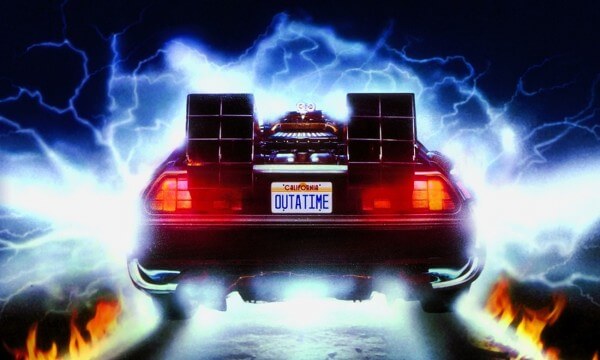
Fire up the DeLorean and put the pedal to the metal. You’ll need 1.21 gigawatts of power at 88 miles per hour to get back to the future or, in this case, the past.

Today is Back to the Future Day. In the second film of the series, Doc Brown and Marty McFly travel to October 21, 2015. The movie franchise inspires the adoration of fans all over the world. It is also a model of the early days of product placement and two brands, in particular, made the most of it.
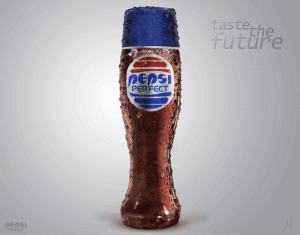
PepsiCo ad execs imagined a futuristic drink called Pepsi Perfect and paid for its screen time with free soda for cast and crew during filming. In the 1980s, product placement was a relatively new practice, one not yet recognized as the cash factory it would become for marketers and the entertainment industry.
To honor its role in Back to the Future Part II, Pepsi produced 6,500 bottles of Pepsi Perfect and sold them on October 21, 2015, for $20.15 apiece. A year later, you can snag one of these bottles on eBay for $75.00 and up. Though the movie’s beverage was nutrient-enriched, the soda in these bottles is just regular Pepsi.
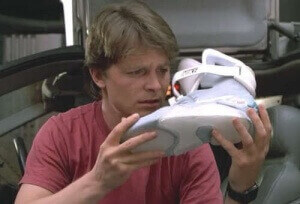
In 2011, Nike produced and auctioned off 1,500 pairs of Air Mags identical to the ones worn by Marty McFly except for one crucial element: power laces. Although prop men achieved that bit of movie magic by pulling on cables to “lace” the sneakers, Nike turned the concept into a reality four years later when it delivered the first self-lacing pair to Michael J. Fox on October 21, 2015, just in time for a tie-in (get it?) with the movie’s anniversary.
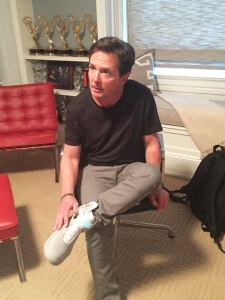
10/21/15: Fox tries on first working pair
Nike has since manufactured a limited edition of 89 pairs of the sneakers, awarding most on October 17, 2016, in an online draw. The cost per entry was a $10 donation to the Michael J. Fox Foundation for Parkinson’s Research, which raised $6.75 million. Two small real-world auctions were conducted as well. In London, a pair fetched $65,000. In Hong Kong, the winner paid $104,267. The final pair will be auctioned off in New York City on November 12, 2016.
One thing that has yet to catch up with the movie is the hoverboard. The Omni works like a helicopter with rotors under a rider’s feet. It holds the Guinness World Record for longest distance traveled by a hoverboard: 905 feet, 2 inches, but the battery is too light to last for more than a couple of minutes. There is also the distinct possibility of dicing a bystander with the blades when landing.
The Lexus and Hendo hoverboards use magnetic fields and will only levitate over a specially made conductive surface, meaning you won’t be able to zip down a street, let alone skate over water. On October 15, 2015, Arx Pax issued a press release announcing it would unveil the Hendo 2.0, designed with the input of skateboarder Tony Hawk, on Back to the Future Day. Sadly, it didn’t materialize.
Most “hoverboards” available today don’t hover at all and could best be described as self-balancing scooters. The batteries of many models can overheat and burst into flame. Owners are cautioned not to leave them unattended while charging, which might be an acceptable risk for someone who gets to fly around on a hoverboard afterward but not so much for the person juicing up a silly-looking skateboard/Segway without handlebars.
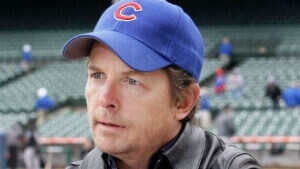
A “prediction” screenwriter Bob Gale added as a joke came closer to fruition than anyone could have guessed. In Back to the Future Part II, the Chicago Cubs won the World Series. In reality, on October 21, 2015, the Cubs played the New York Mets in the fourth game of the National League Championship Series. (The Major League Baseball schedule has changed since the film came out, so the timing of the World Series is a bit off.)
If the Cubs had beaten the Mets and gone on to win the World Series, it would have been the team’s first pennant in 70 years and first World Series win since 1908. It didn’t happen, though. The Mets won all of the first four games, obviating the need to continue the seven-game series.
In the movie, the Cubs beat Miami, which had no team in 1989. Gale says, “People don’t automatically realize when they watch the movie today, but we were predicting there would be a major league team in Miami.”
Love for the Back to the Future trilogy reaches back decades. The movies continue to attract new fans and inspire companies to pursue their vision. Who knows what the 50th anniversary will bring? Until someone soups up a DeLorean, we’re all going to have to wait to find out.

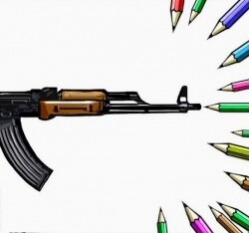 Chicago Richard Daley declared October 25th, 1993, Cartoonists Against Crime Day.
Chicago Richard Daley declared October 25th, 1993, Cartoonists Against Crime Day.![]()








 Today is Information Overload Day. Why? Here’s a hint. In April 2016,
Today is Information Overload Day. Why? Here’s a hint. In April 2016, 